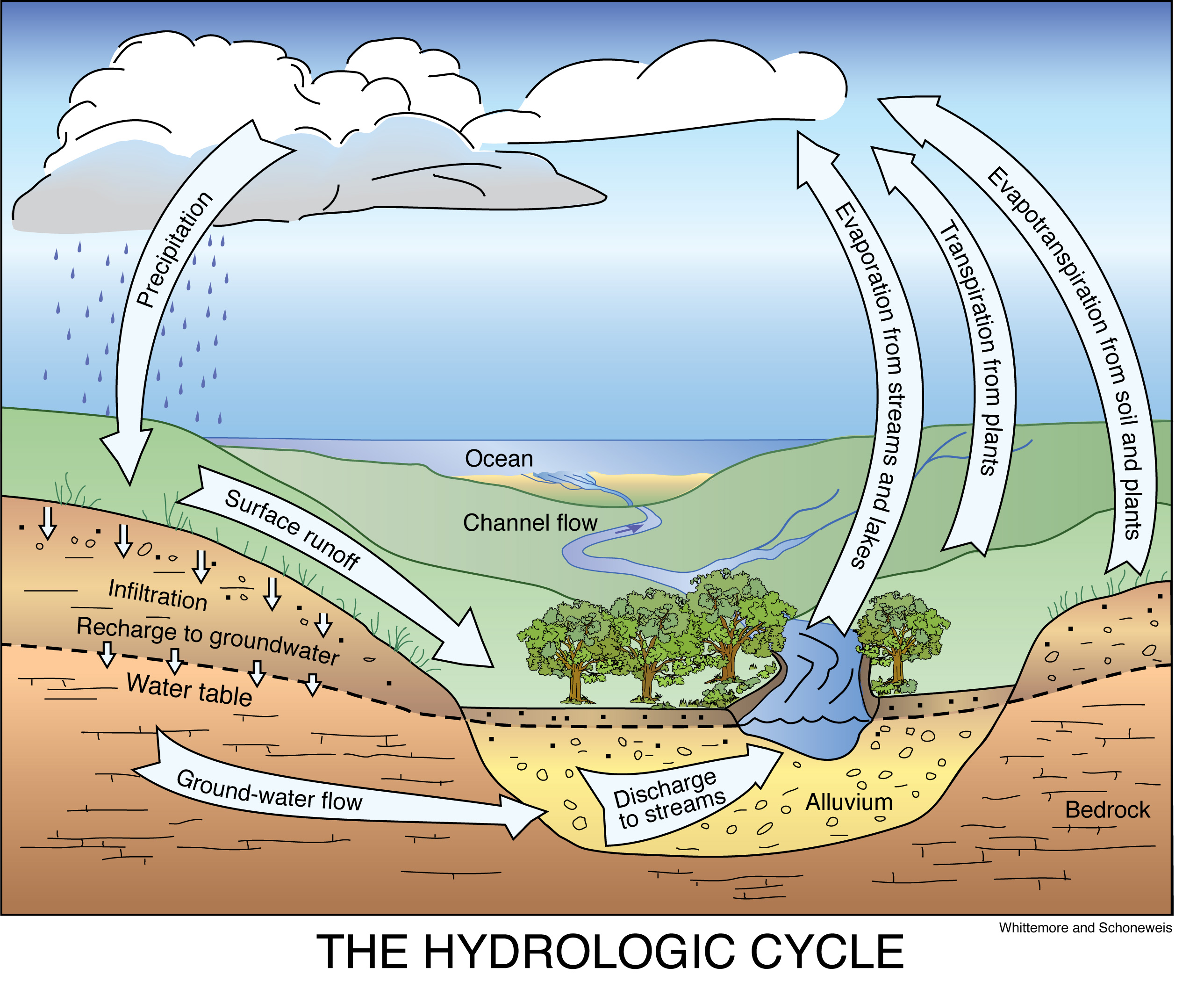The hydrologic (water) cycle

The hydrologic cycle illustrates how water moves from the atmosphere down to Earth’s surface, into the subsurface, and back up into the atmosphere. When water droplets in clouds get heavy, they fall to Earth as precipitation—rain, snow, hail, and sleet. What doesn’t transpire through plants and animals or evaporate directly back into the atmosphere runs into rivers, lakes, wetlands, and oceans or seeps into the ground.
Groundwater moves slowly through subsurface rock and sediment and may eventually work its way back to the surface through springs or through streams that interact with the groundwater. It may also be pumped to the surface through water wells for human consumption and irrigation. Surface water in rivers, lakes, and wetlands rejoins the water cycle when it evaporates or transpires into the atmosphere or infiltrates into the ground.
Resources
Ground-Water Recharge in Kansas (Public Information Circular 22)
Safe Yield and Sustainable Development of Water Resources in Kansas (Public Information Circular 9)